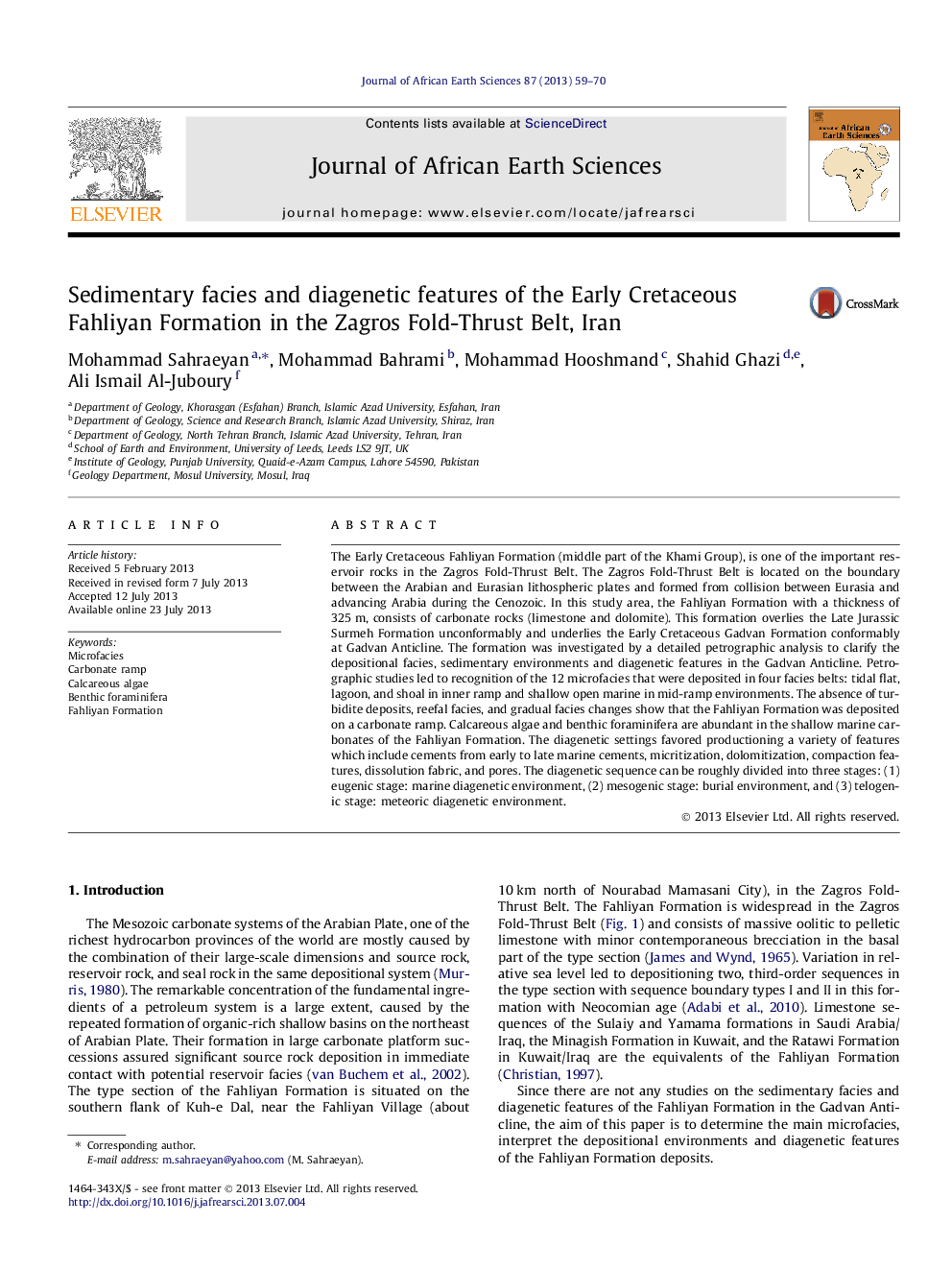| کد مقاله | کد نشریه | سال انتشار | مقاله انگلیسی | نسخه تمام متن |
|---|---|---|---|---|
| 4728898 | 1640219 | 2013 | 12 صفحه PDF | دانلود رایگان |
• The Early Cretaceous Fahliyan Formation (middle part of the Khami Group), is a reservoir rock in Zagros Fold-Thrust Belt.
• The Fahliyan Formation with a thickness of 325 m, consists of limestone and dolomite at Gadvan Anticline.
• 12 Microfacies were recognized in this formation.
• Fahliyan Formation deposits were deposited in four facies belts: tidal flat, lagoon, shoal and shallow open marine.
• The diagenetic sequence divided into three stages: eugenic stage, mesogenic stage, and telogenic stage.
The Early Cretaceous Fahliyan Formation (middle part of the Khami Group), is one of the important reservoir rocks in the Zagros Fold-Thrust Belt. The Zagros Fold-Thrust Belt is located on the boundary between the Arabian and Eurasian lithospheric plates and formed from collision between Eurasia and advancing Arabia during the Cenozoic. In this study area, the Fahliyan Formation with a thickness of 325 m, consists of carbonate rocks (limestone and dolomite). This formation overlies the Late Jurassic Surmeh Formation unconformably and underlies the Early Cretaceous Gadvan Formation conformably at Gadvan Anticline. The formation was investigated by a detailed petrographic analysis to clarify the depositional facies, sedimentary environments and diagenetic features in the Gadvan Anticline. Petrographic studies led to recognition of the 12 microfacies that were deposited in four facies belts: tidal flat, lagoon, and shoal in inner ramp and shallow open marine in mid-ramp environments. The absence of turbidite deposits, reefal facies, and gradual facies changes show that the Fahliyan Formation was deposited on a carbonate ramp. Calcareous algae and benthic foraminifera are abundant in the shallow marine carbonates of the Fahliyan Formation. The diagenetic settings favored productioning a variety of features which include cements from early to late marine cements, micritization, dolomitization, compaction features, dissolution fabric, and pores. The diagenetic sequence can be roughly divided into three stages: (1) eugenic stage: marine diagenetic environment, (2) mesogenic stage: burial environment, and (3) telogenic stage: meteoric diagenetic environment.
Figure optionsDownload as PowerPoint slide
Journal: Journal of African Earth Sciences - Volume 87, November 2013, Pages 59–70
